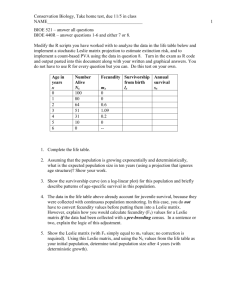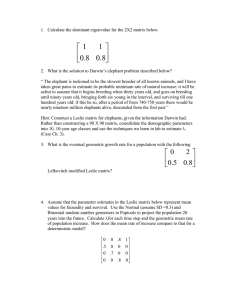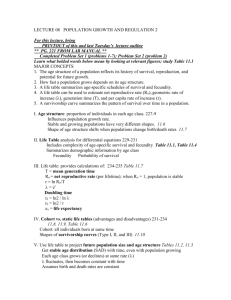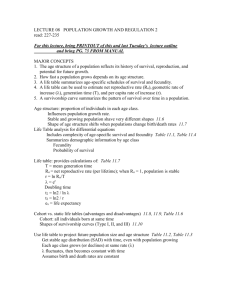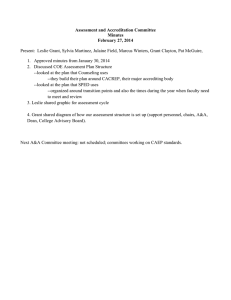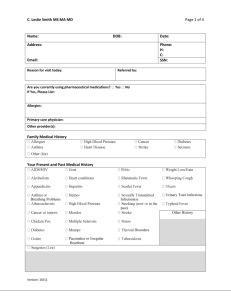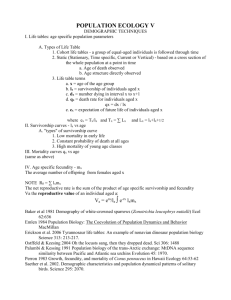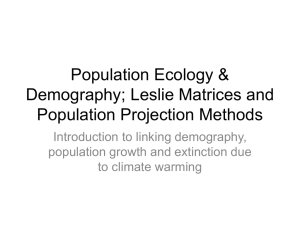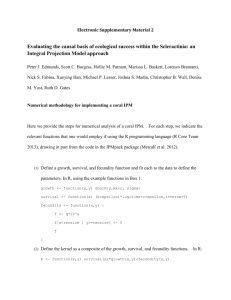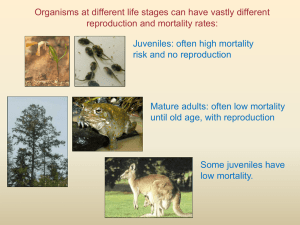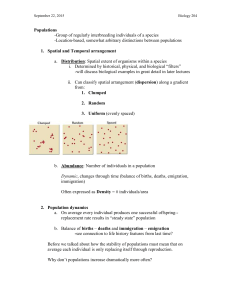Word file - Montana State University
advertisement
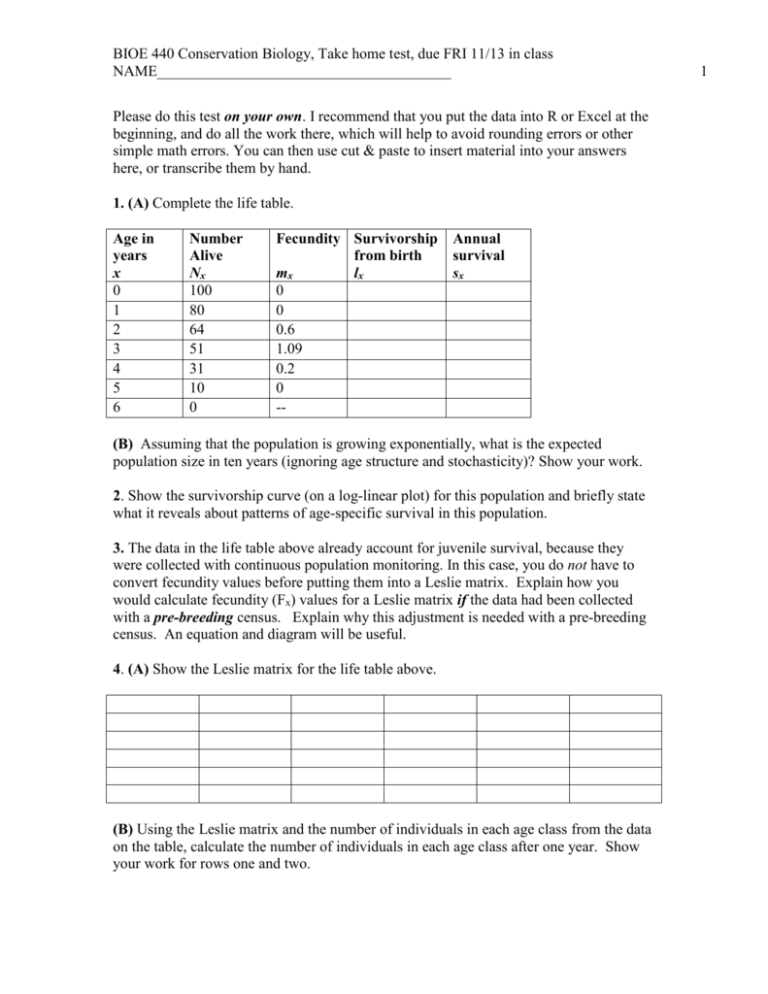
BIOE 440 Conservation Biology, Take home test, due FRI 11/13 in class NAME_______________________________________ Please do this test on your own. I recommend that you put the data into R or Excel at the beginning, and do all the work there, which will help to avoid rounding errors or other simple math errors. You can then use cut & paste to insert material into your answers here, or transcribe them by hand. 1. (A) Complete the life table. Age in years x 0 1 2 3 4 5 6 Number Alive Nx 100 80 64 51 31 10 0 Fecundity Survivorship from birth mx lx 0 0 0.6 1.09 0.2 0 -- Annual survival sx (B) Assuming that the population is growing exponentially, what is the expected population size in ten years (ignoring age structure and stochasticity)? Show your work. 2. Show the survivorship curve (on a log-linear plot) for this population and briefly state what it reveals about patterns of age-specific survival in this population. 3. The data in the life table above already account for juvenile survival, because they were collected with continuous population monitoring. In this case, you do not have to convert fecundity values before putting them into a Leslie matrix. Explain how you would calculate fecundity (Fx) values for a Leslie matrix if the data had been collected with a pre-breeding census. Explain why this adjustment is needed with a pre-breeding census. An equation and diagram will be useful. 4. (A) Show the Leslie matrix for the life table above. (B) Using the Leslie matrix and the number of individuals in each age class from the data on the table, calculate the number of individuals in each age class after one year. Show your work for rows one and two. 1 BIOE 440 Conservation Biology, Take home test, due FRI 11/13 in class NAME_______________________________________ 5. Determine the expected stable age distribution for this population. Compare the stable age distribution to the actual age distribution from the number of individuals in each age class in the life table above– making the comparison graphically would show the similarities and differences most clearly. What does this comparison suggest about the recent stability (or lack of stability) of the population’s birth and death rates? Age Stable age distribution (% of population) Observed age distribution (% of population) 0 1 2 3 4 5 6. Using the set of lion counts in the table below, use a count-based PVA approach to estimate (A) the arithmetic mean annual growth and the geometric mean annual growth, and (B) the probability that population size will drop below 100 within the 20 years after 1982. In stating your results, include a brief statement of the important assumptions of your analysis. (C) Given your answer to part A and part B, briefly state why a population whose mean growth rate is positive can still have a risk of extinction (or pseudoextinction, in this case)? Year Lion Count 1963 109 1964 125 1965 222 1966 189 1967 250 1968 165 1969 150 1970 147 1971 132 1972 250 1973 229 1974 323 1975 250 1976 124 1977 209 1978 138 1979 144 1980 149 1981 173 1982 186 2
